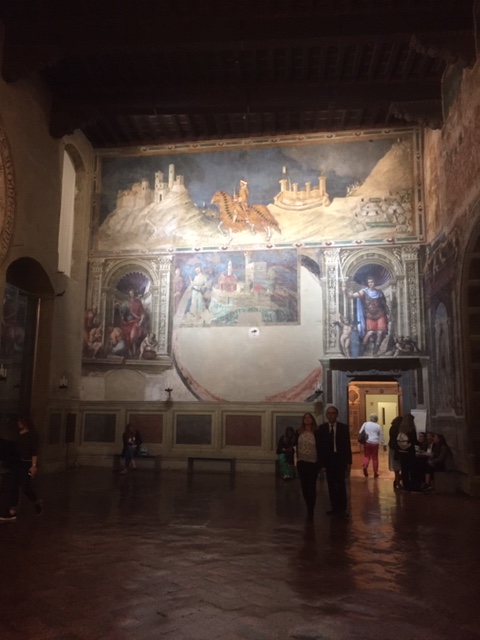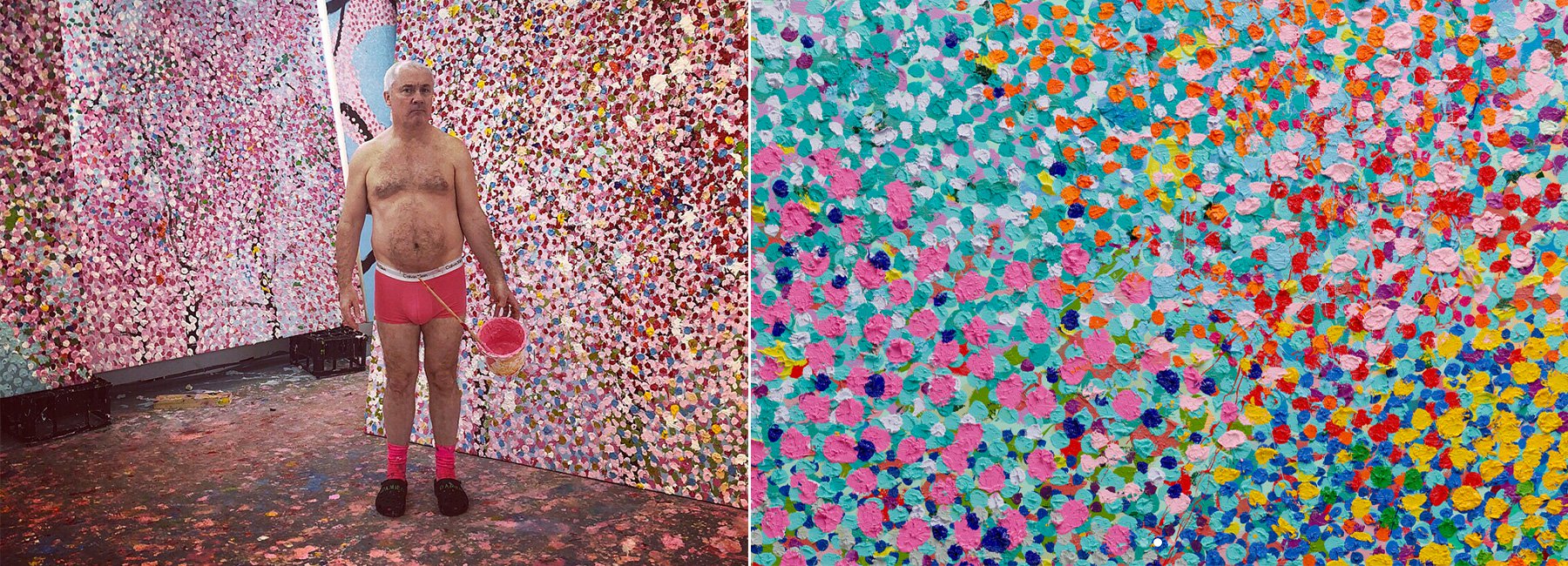
…which was some 20 metres in front of me. As I had been in front of hundreds of other Renaissance walls over the last 30+ years, the tour guide’s explanation was rather easy to switch off to. She knew her stuff and dispatched her lines with passion but the fact that I had been travelling for a whole day and it was now late evening meant I was not open to learning new material.
That was until I heard her comment that this mural was created almost 700 years ago. The sheer old age of the massive painted wall struck me much more than the work itself. That is not to say that the painting lacked impact but it was the realisation of its ancientness that really impressed me. I stared at the expanse and imagined a team of committed young artists (presumably all men) perched high up on wobbly ladders and wielding heavy brushes in cold damp winters and hot sweaty summers. Each one would have had the mind set of an intern doing his best to impress the maestro and would have been exuding a deep concentration. And like an intern, the artists probably suffered from the nagging fear that this was the proverbial ’it’, their career apex and that the next gig was not guaranteed because other hopeful apprentices were coming through the ranks and would be the next in line to be underpaid.
Another realisation was the absolute attention to detail that the artist and his team would have invested in creating and interpreting the picture. Being a very large piece, the translation from say an A3 sketch to something around 10 meters tall would have been a labour of complex (what we now call) logistics. The artists were clearly technically adept at drawing and painting on ‘normal’ sized canvases, but to magnify the effort to around 30 times the regular size must have been a serious challenge.
I found myself wondering what motivated artists to take on such colossal and difficult projects? I suppose the main creator would have enjoyed a decent pay out from his client which would have been the city council (as in this case), a wealthy benefactor or the church, but I don’t think people became artists to make big money. The motivation would I suspect have been from faith, both religious as in most Renaissance paintings and in their own artistic journey.
It’s hard for me to relate to religious faith because I have no compelling beliefs of my own, but when I consider that the artists of the period could not express themselves other than through formal topics I am rather envious that they could conjure up inspiration, even if it was based on what I consider to be a stifling and obligatory (religious) premise.
In this, the 21st Century we see ourselves, in the west at any rate, as having a free access to expression. I can write this blog and although some people may criticise it (not that I allow any comments) I won’t be imprisoned for it. I wonder though how helpful this liberal backdrop actually is. If people created valid works of art under the constraints of religion and politics how valid is freedom of expression in the creative context? The present seems to throw up so many mercenary artists that go for the money that I wonder if freedom is the bed fellow of cynicism.

A modern day so called artist channelling his inner Jackson Pollock in a literal way.
Top picture: Il Guidoriccio da Fogliano, rifacimento quattrocentesco di un originale di Simone Martini (1330) Siena, Italy
Damien Hirst photo: https://www.designboom.com/art/damien-hirst-winning-caption-first-instagram-competition-veil-paintings-08-18-2018/
